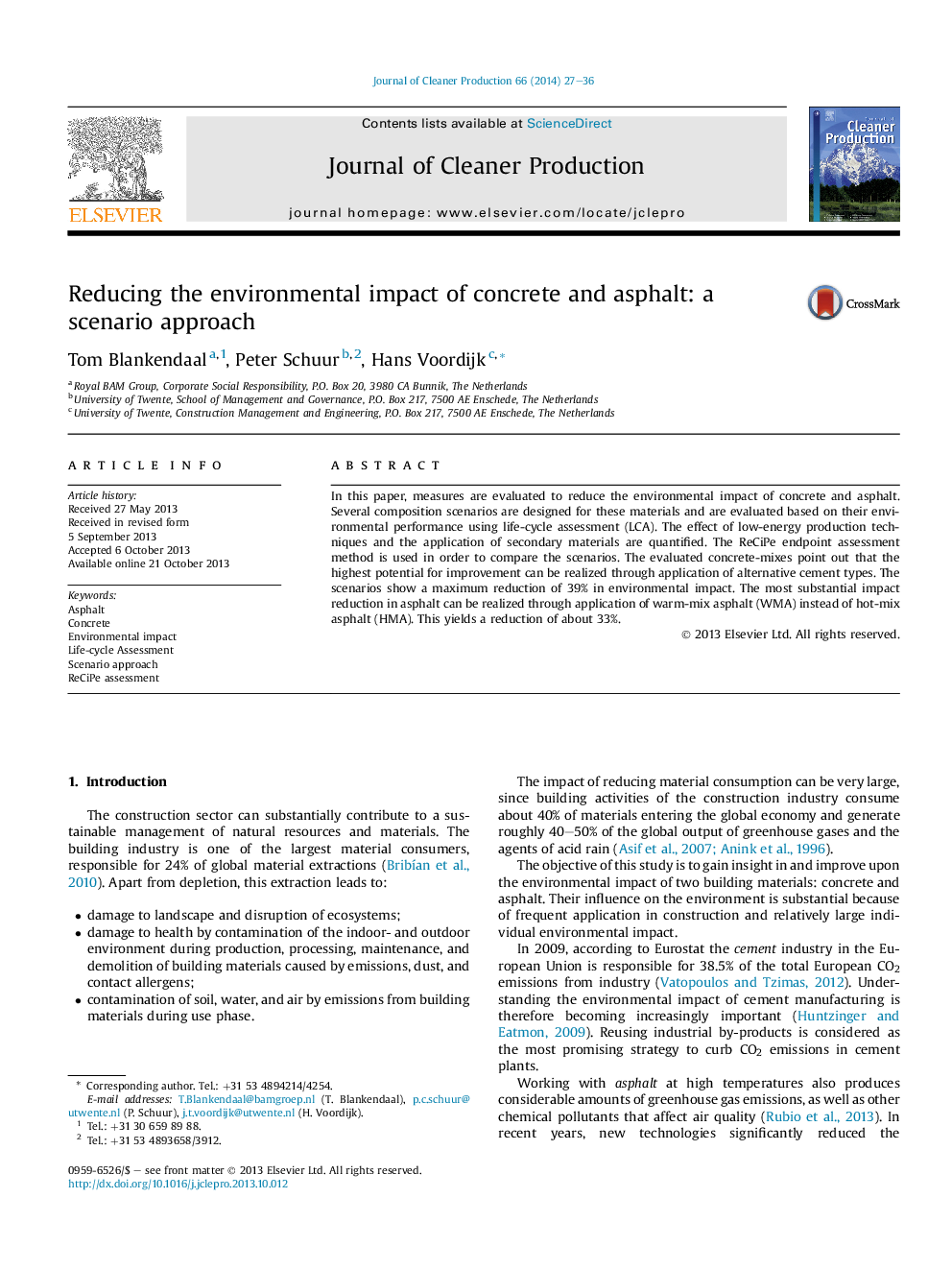| Article ID | Journal | Published Year | Pages | File Type |
|---|---|---|---|---|
| 1744970 | Journal of Cleaner Production | 2014 | 10 Pages |
•Measures are evaluated to reduce the environmental impact of concrete and asphalt.•Low-energy production techniques and the use of secondary materials are examined.•The impact is measured using scenarios and life-cycle assessment.•The scenarios show a maximum reduction of 39% in environmental impact.•Substantial impact reduction can be realized through applying warm-mix asphalt.
In this paper, measures are evaluated to reduce the environmental impact of concrete and asphalt. Several composition scenarios are designed for these materials and are evaluated based on their environmental performance using life-cycle assessment (LCA). The effect of low-energy production techniques and the application of secondary materials are quantified. The ReCiPe endpoint assessment method is used in order to compare the scenarios. The evaluated concrete-mixes point out that the highest potential for improvement can be realized through application of alternative cement types. The scenarios show a maximum reduction of 39% in environmental impact. The most substantial impact reduction in asphalt can be realized through application of warm-mix asphalt (WMA) instead of hot-mix asphalt (HMA). This yields a reduction of about 33%.
